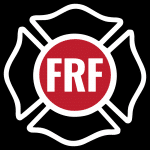Defining “Functional” Fitness for First Responders.
What does functional training mean for the first responder?
What makes an exercise "functional" for firefighters, EMTs, and medics? In order to answer this question, we must first define what functional training means. The definitions can be varied and broad and often the term functional training is abused and over-used. The best definition that I found and one that I think really pertains to the fire service comes from the Mayo clinic. They define functional training as:
“Training the body for the activities performed in daily life”.
Because we move in complex ways, training should not be limited to a set of exercises within a singular plane or axis. In many gyms and firehouses, there are exercise machines and exercises performed that only work through one or two planes of motion and isolate muscle groups.
Training a single joint, limited in its planes and axes of movement, is still important for strengthening a weak link in a muscle chain. However, this is only one part of the many complex movements that need to be trained to maximize performance on the fire/ rescue scene.

In the context of first responders, our daily life or shift requires us to lift heavy patients, drag heavy firehose, climb stairs with heavy gear, carry equipment, and lift and hoist ladders overhead, all of which require good core strength and mobility. Therefore, for an exercise to be "functional' for a first responder, it must help us perform one if not all of those activities. Right? Watch this video for more insight and some great examples of "functional" exercises.
To help you and your crew understand how to create and determine functional exercises, I listed some examples below. These exercises may look familiar but the subtle change of stance or posture can go a long way in making them more effective. Try to integrate these variations into your next workout.

Why it is functional. This is a great option to work the muscles of the chest, shoulders, and triceps. It will improve balance and stability in the shoulders and can add aesthetics to your chest. This movement can be done with a flat and/or incline bench. This exercise improves stability and balance of the shoulders and will also improve the strength of the core and obliques thus making it more functional than a traditional chest press.

Why it is functional. Initially the prisoner squat looks like a much easier 'unloaded" version of the back squat. This may appear to be true but what makes the prisoner squat functional is the stress it places on the muscles of the upper back and neck. This exercise, if done properly, can improve posture, increase stability in the shoulders, and mobility in the lower body. This is a great exercise for beginners and/or to use as an active warm-up before workouts and shifts.

Why it is functional. This version of the row forces your lower body to work hard to stabilize the movement. Traditionally many people put one leg on a bench when performing the one-arm row. By changing your stance and keeping both legs on the ground you really feel the muscles of the back, glutes, and core working together, just as they need to when on the fire ground. Give this version a try, it is more functional and will lead to better performance.

The Carry Exercise. Why it is functional. As first responders, we routinely carry and move heavy objects, whether that be gear, patients, or equipment. Because we do this so often on the job, this exercise is usually overlooked in the gym. The carry exercise will help improve grip strength and posture which will transfer to the fire/rescue scene. It is a very easy exercise to integrate into workouts, just grab some weights, focus on posture (head and shoulders back, brace the core) and walk for a prescribed distance. Start with lighter weights and shorter distances and emphasize good form and posture.

Why it is functional. This exercise is like the plank on steroids. It works the core like the traditional plank and adds the toe touch which forces the shoulders to stabilize and mobilize. You will feel your shoulders and core burning just like they do when crawling on the fire/ rescue scene. This exercise will improve shoulder strength, core strength, and mobility in the upper body, all of which will help performance on the job.
I hope these four examples and the above video helped you (and your crew) understand what functional training is and how you can integrate it into your workouts. If you have any feedback or questions can reach me via the "contact FRF" tab. Please share this information with your crew and give these exercises a try.
Stay safe and #GETFRF,

Zam (Aaron Zamzow)
Discover how to train more functionally to improve performance on (and off) the fire ground.
Fire Rescue Fitness has effective programs for every level of fitness. Click here to find the best program for you. It is time to GET FRF!


